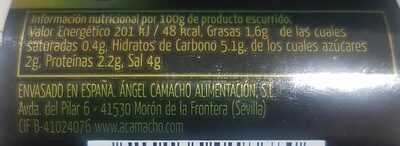Dientes de ajo en salmuera - Fragata
This product page is not complete. You can help to complete it by editing it and adding more data from the photos we have, or by taking more photos using the app for Android or iPhone/iPad. Thank you!
×
Barra-kodea: 8410134018680 (EAN / EAN-13)
Markak: Fragata
Kategoriak: en:Plant-based foods and beverages, en:Plant-based foods, en:Fruits and vegetables based foods, en:Canned foods, en:Condiments, en:Vegetables based foods, en:Canned plant-based foods, en:Culinary plants, en:Pickles, en:Canned vegetables, en:Plant-based pickles, en:Pickled vegetables, en:Garlic and their products, en:Pickled garlic, en:groceries
Etiketak, ziurtagiriak, sariak: en:No gluten
Saltzen diren herrialdeak: Espainia
Matching with your preferences
Ingurumena
Ontziratzea
Transportation
Report a problem
Datuen iturria
Product added on by kiliweb
Last edit of product page on by thaialagata.
Produktuaren orria -gatik editatua openfoodfacts-contributors, roboto-app, scsibueno, yuka.YlBrR1AvZ3FpUDAwcTlvQTgwcUVwOWR4M3JDc2NVNjFlK2xMSUE9PQ.










